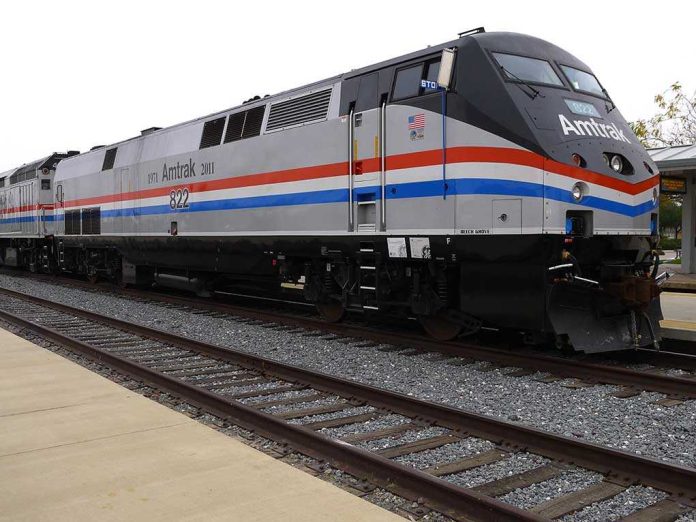
Rail customers across America are sounding the alarm after Union Pacific and Norfolk Southern announced a colossal $250 billion merger that would put a single company in control of the nation’s first coast-to-coast rail line.
Story Snapshot
- Union Pacific and Norfolk Southern plan to merge, forming the first U.S. transcontinental railroad valued at over $250 billion.
- Seven major shipper groups are urging federal regulators to block or heavily condition the deal, warning of reduced competition and higher shipping rates.
- The Surface Transportation Board (STB) has begun a formal review, with public opposition from key stakeholders intensifying.
- Industry experts warn the merger could reshape national logistics and set a precedent for future rail consolidation.
Rail Merger Sparks Immediate Backlash from Shippers
Union Pacific Corporation and Norfolk Southern Corporation signed a landmark merger agreement on July 28, 2025, announcing their plans to form the first coast-to-coast railroad in U.S. history the following day. The deal, worth more than $250 billion, immediately drew fierce opposition from seven major shipper associations, who filed urgent requests with the Surface Transportation Board to either block the merger outright or impose strict conditions to protect competition and service reliability.
These shipper groups, representing agricultural, chemical, industrial, and consumer goods sectors, argue that granting one company control over transcontinental freight routes would inevitably lead to reduced competition, degraded service, and higher costs for American businesses and consumers. Their opposition, reported by the Financial Times and echoed by industry groups, marks the beginning of a high-stakes regulatory battle over the future of U.S. freight rail.
U.S. railroad customer groups have demanded regulators block or put onerous conditions on the proposed merger of Union Pacific and Norfolk Southern. https://t.co/NEXguGGdX0
— NEWSMAX (@NEWSMAX) August 3, 2025
The regulatory process began in earnest on July 30, 2025, when the STB received formal notification of the merger and started its review. For many shippers and industry observers, the scale of this deal—and its potential to disrupt critical supply chains—sets it apart from previous railroad mergers. As the STB considers whether to approve, block, or set strict conditions on the merger, both supporters and critics are mobilizing to influence the outcome.
Historic Industry Consolidation Raises Competition Concerns
This merger represents the largest consolidation in U.S. rail history since the wave of mergers triggered by the 1980 Staggers Rail Act. Union Pacific and Norfolk Southern, both with roots stretching back to the 19th century, are already among the nation’s most powerful freight carriers. If combined, the new entity would control rail shipments from the Atlantic to the Pacific—an unprecedented level of market power for a single company. Shipper groups point to lessons from the 2023 Canadian Pacific–Kansas City Southern merger, which faced similar scrutiny but ultimately received approval with conditions. Experts and industry leaders warn that this latest deal could be far more consequential for competition and service reliability, especially for “captive shippers” with access to only one major rail line.
The STB has signaled its willingness to take a more active role in regulating major rail mergers, emphasizing its responsibility to prevent harm to competition and uphold the public interest. Legal and economic analysts note that the Board has broad authority to impose conditions or even block the merger outright. The coming months will see intense lobbying, public comments, and likely Congressional interest as the STB moves through its review process.
Stakeholders, Economic Impact, and National Security
Union Pacific and Norfolk Southern executives tout the merger as a boon for the American economy, promising enhanced efficiency, supply chain resilience, and job preservation. They claim the unified network will deliver better service and unlock new opportunities for U.S. manufacturers and exporters. Shipper groups, however, warn that these promises ring hollow in the face of diminished market competition. They cite the risk of higher shipping rates, deteriorating service, and less choice for American businesses—factors that ultimately threaten the competitiveness of the U.S. economy.
The merger’s outcome will directly affect thousands of railroad employees, hundreds of communities dependent on rail service, and countless businesses that rely on affordable, dependable freight transportation. Conservative observers highlight the risks of excessive industry consolidation, warning that unchecked mergers can erode free markets and harm American families by driving up costs. In the current climate, with ongoing concerns about supply chain security and economic resilience, many see the STB’s decision as a test of the federal government’s commitment to protecting competition and safeguarding American interests.
What Comes Next in the Regulatory Battle
The merger has entered the prefiling notification stage, with Union Pacific and Norfolk Southern required to submit a full application to the STB within the next three to six months. The Board will then review the submission, solicit public comments, and set a timetable for hearings and a final decision. Industry analysts predict that the STB could impose strict conditions to preserve competition or, should the risks prove too great, block the deal entirely. The process will be closely watched by Congress, state governments, and a broad coalition of stakeholders on both sides of the debate.
The stakes are high: if approved, the merger would fundamentally alter the structure of the U.S. rail industry, potentially setting the stage for further consolidation among the remaining Class I railroads. Critics warn that such a shift could undermine the core principles of free enterprise, reduce consumer choice, and increase the risk of government overreach if regulators fail to act decisively. Supporters argue that a stronger, unified rail network would enhance American competitiveness on the global stage. The coming months will reveal whether regulators prioritize competition, service, and American economic security—or allow a single corporate giant to reshape the nation’s critical freight infrastructure.
Sources:
Fox Business: Union Pacific, Norfolk Southern merge creating first US transcontinental railroad
Surface Transportation Board: Notice of Intent for Proposed Merger
Union Pacific: Customer and public announcements
Union Pacific: Growth and transcontinental railroad news














